Tomato Ketchup Heinz is made of a whole lot of stuff going inside it from vegetables to tomatoes and spices to preservatives. Salt (Sodium Chloride), Sugar, Spices, Spice Extracts, Vinegar, Acetic Acid, Onions, Garlic, Chillies, Pectin, and Alginates as Stabilizers.

Table of Contents
Tomato Ketchup Production Flow Chart

What are the manufacturing stages of tomato ketchup?
To get tomato ketchup, good tomatoes must go through several stages
1. Pulping
The tomatoes are chopped and precooked, then pumped into Pulping Machines, or Cyclones, which separate seeds, skins, and stems from the pulp. This pulp is Filtered through Screens and processed further into ketchup, and some are stored in a form of paste to use later in the year.
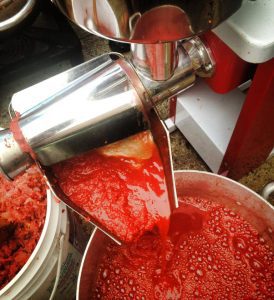
2. Adding Ingredients and Cooking
The pulp is pumped into Cooking Tanks or Kettles and heated to boiling and Kept at a Temperature above 80°C. Measured amounts of sweeteners, vinegar, salt, spices, and flavorings are added to the tomato pulp. To avoid evaporation of volatile oils they are not added early during the boiling with the spices, salt, and sugar. Powders of onion or garlic are usually added which are procured from various firms which do the dehydration. The Mixture is Cooked for 30-45 minutes and is Circulated by Rotating Blades installed in the cookers or kettles. The temperature is carefully regulated to insure the absorption of the ingredients without overcooking.

3. Finishing
Once the cooking is completed, the ketchup mixture passes through a Finishing Machine. Finishers are used to Remove Excess Fiber and Particles they do so with the help of screens, creating a smoother consistency. The ketchup is sometimes milled at higher temperatures and pressures to achieve a smoother consistency.
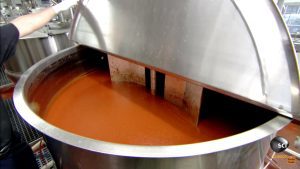
4. Removing air
The ketchup is De-aerated to Prevent Discoloration and the Growth of Bacteria. Excess air may cause unattractive air pockets and impede the closure process.
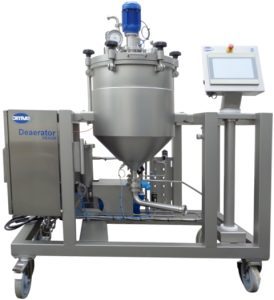
5. Filling Tomato Ketchup Heinz
To prevent contamination, the ketchup passes from the receiving tanks to the Filling Machines at a temperature Not Lower than 88°C. The containers are filled with the ketchup and Immediately Sealed to Retain the Freshness of the product. Ketchup containers are available in various sizes and shapes.
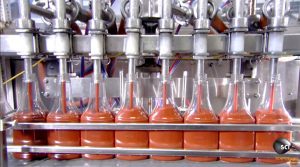
6. Cooling
The containers are cooled to prevent Flavour Loss through Stack Burning, which occurs when ketchup stays at high temperatures after cooking is complete. Containers of ketchup are cooled in cold air or cold water.
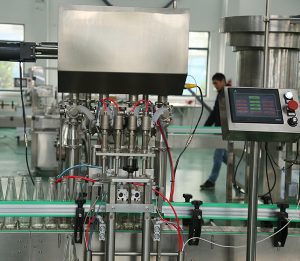
7. Labelling and Packing
Finally, the ketchup containers are Labelled and coded with product information, including Ingredients, Date, Location of Manufacture, and Shelf-Life. The bottled ketchup may be inspected again before shipping. The entire process of Ketchup manufacturing generally Takes two to three hours.
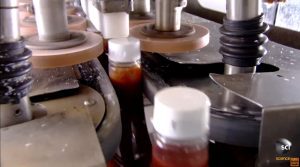
Viscosity Of Tomato Ketchup Heinz
Being a Non-Newtonian Fluid, its Viscosity is high and because of this only it’s hard to pour out of the bottle. The viscosity of ketchup ranges from 50,000-70,000 Centipoises.
How do I choose containers that preserve the quality of tomato ketchup?
The effect of packaging and the selection of appropriate packaging for tomato sauce are vital aspects in determining the quality of the product and its effective supply to consumers. Canning is one of the main factors that affect the shelf life of tomato sauce and its preservation of its flavor and quality for a long time. Canning processes prevent bacterial decomposition and oxidation, preserving the nutritional properties and fresh taste of the sauce.
When appropriate packaging is selected, it must comply with preservation requirements and provide effective protection for the product. Containers must be of high quality and specially designed to prevent leakage and contamination, as any weakness in the containers can lead to a loss of quality and nutritional value of the product.

In addition, it should be suitable for market needs and consumer consumption habits, whether small packages for individual use or large packages for family use.
Glass, metal and plastic containers are very popular for canning tomato sauce, as these options allow the taste and quality to be retained for a longer period. Some plastic containers also offer additional features such as ease of opening and resealing, making them practical and convenient for daily consumption.
By choosing the right canning processes and packaging, consumers can enhance their experience and ensure they enjoy delicious tomato sauce with ease and for a longer period of time.
In the end, the homemade ketchup industry seems simple, but when tomato ketchup is manufactured in large quantities while taking care of the quality and specifications that match international standards, it is good to listen to experts in the field of food processing, as Nanopro food processing consulting guarantees you the shortest way to reach your goals in the field of food industries.

